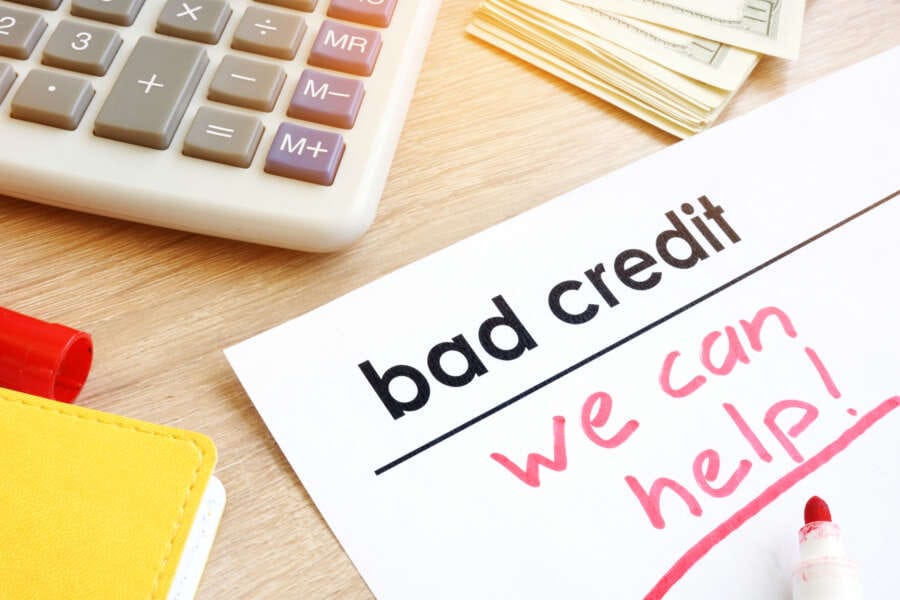
Getting a loan with bad credit can be a challenging endeavor, but it’s not an impossible one. Life is full of unexpected twists and turns, and sometimes financial difficulties can lead to a less-than-perfect credit score. Whether you’re in need of funds for an emergency, a major purchase, or to consolidate existing debts, there are strategies and options available that can help you secure a loan even with a less-than-stellar credit history. In this guide, we’ll explore practical steps, tips, and alternative avenues that can empower you to navigate the lending landscape and improve your chances of getting the loan you need, all while working towards rebuilding your credit for a brighter financial future. Remember, a bad credit score doesn’t define your worth, and with the right information and determination, you can take control of your financial situation. Let’s embark on this journey to discover how to get a loan with bad credit and pave the way for better financial stability.
Understanding the Importance of Credit Score
Your credit score is a critical factor that lenders consider when evaluating your loan application. It reflects your financial responsibility and helps lenders assess the risk of lending to you. A lower credit score can make it challenging to secure a loan, but there are strategies to navigate this situation.
Challenges of Getting a Loan with Bad Credit
Individuals with bad credit face hurdles in obtaining loans due to the perceived risk. However, this guide will show you how to overcome these obstacles and secure the financing you need, regardless of your credit history.
Assessing Your Financial Situation
- Reviewing Your Credit Report
Begin by obtaining a copy of your credit report from major credit bureaus. Scrutinize it for errors, inaccuracies, or outdated information that might be negatively impacting your score.
- Calculating Debt-to-Income Ratio
Calculate your debt-to-income ratio by dividing your monthly debt payments by your monthly income. Lenders use this ratio to assess your ability to manage additional debt.
- Identifying Available Collateral
If possible, identify assets you could use as collateral. Collateral reduces risk for the lender, potentially making it easier to secure a loan.
Exploring Loan Options
Traditional Lenders vs. Alternative Lenders
Understand the differences between traditional lenders, like banks and credit unions, and alternative lenders, such as online platforms. Alternative lenders may be more open to lending to individuals with bad credit.
Types of Loans for Bad Credit Borrowers
- Secured Loans: These loans require collateral, which can be a vehicle, property, or other valuable asset.
- Personal Instalment Loans: Borrow a fixed amount and repay it in regular instalments.
- Payday Loans: Short-term, high-interest loans typically due on your next payday.
- Peer-to-Peer Loans: Borrow from individuals through online platforms, potentially with more flexible terms.
Improving Your Loan Application
- Building a Solid Repayment Plan
Develop a realistic repayment plan that showcases your commitment to honouring the loan agreement.
Gathering Necessary Documentation
- Proof of Income: Provide recent pay stubs or tax returns to demonstrate your ability to repay.
- Employment Verification: Lenders may contact your employer to verify your income and employment status.
- References: Personal and professional references can vouch for your character and reliability.
Providing Guarantors or Co-signers
A guarantor or co-signer with good credit can enhance your application’s credibility and increase your chances of approval.
Researching and Selecting Lenders
- Comparing Interest Rates and Terms
Request loan quotes from multiple lenders and compare interest rates, fees, and terms.
- Reading Reviews and Seeking Recommendations
Evaluate the credibility of lenders by conducting thorough online research, carefully examining customer reviews, and seeking out personal recommendations from trusted sources such as friends, family, or financial advisors. This proactive approach will help you gauge the reputation of potential lenders and make more informed decisions regarding your loan options.
- Checking for Transparency and Credibility
Choose lenders that are transparent about their terms and have a positive track record of serving borrowers with bad credit.
Applying for the Loan
- Completing the Application Form
Fill out the application form accurately and provide all required information.
- Submitting the Application Online or In-Person
Choose the application method that suits you best, whether online or in-person.
- Being Honest and Accurate in Your Application
Avoid misrepresenting your financial situation; honesty increases your chances of a successful application.
Negotiating Loan Terms
- Exploring Possibilities for Lower Interest Rates
Negotiate with lenders to secure more favourable interest rates based on your improved repayment plan.
- Requesting Flexible Repayment Plans
Ask for flexible repayment options, such as longer terms or bi-weekly payments, to better align with your budget.
Accepting and Utilizing the Loan
- Reviewing the Loan Agreement
Thoroughly review the loan agreement before accepting the offer.
- Understanding Repayment Schedule and Terms
Understand the repayment schedule, interest rates, and any associated fees.
- Using the Loan for Its Intended Purpose
Use the loan responsibly for its intended purpose, whether it’s consolidating debt, covering medical expenses, or making necessary purchases.
Building and Rebuilding Credit
- Making Timely Payments
Consistently make payments on time to demonstrate your reliability as a borrower.
- Keeping Balances Low
Keep credit card balances and other debts as low as possible to improve your credit utilization ratio.
- Monitoring Your Credit Report
Regularly monitor your credit report for changes, and address any inaccuracies promptly.
Alternative Financing Options
- Secured Credit Cards
Build or rebuild credit with a secured credit card, where your credit limit is backed by a deposit.
- Credit Union Loans
Explore loan options from credit unions, which may offer more personalized lending solutions.
- Online Lending Platforms
Consider online lending platforms that specialize in bad credit loans and offer convenient application processes.
Avoiding Predatory Lending
- Recognizing Warning Signs
Be cautious of lenders with overly aggressive tactics, high-pressure sales, or unclear terms.
- Understanding Legal Regulations
Familiarize yourself with local lending laws and regulations to protect yourself from predatory practices.
- Seeking Financial Counselling
If in doubt, seek guidance from a financial counsellor or advisor to make informed borrowing decisions.
In conclusion, obtaining a loan with bad credit is undoubtedly a challenging endeavor, but it’s far from impossible. It requires careful planning, diligent research, and a proactive approach to improving your financial situation. By taking steps to rebuild your credit, exploring alternative lending options, and demonstrating a stable income, you can increase your chances of securing a loan even in the face of a less-than-perfect credit history. Remember, patience and persistence are key; as you work to enhance your creditworthiness, keep a watchful eye on your spending habits and explore opportunities to demonstrate your ability to repay. Additionally, seeking the guidance of financial professionals and utilizing credit counseling resources can provide valuable insights and support. While the journey might be challenging, successfully obtaining a loan with bad credit can serve as a crucial stepping stone toward better financial stability and a brighter future.


